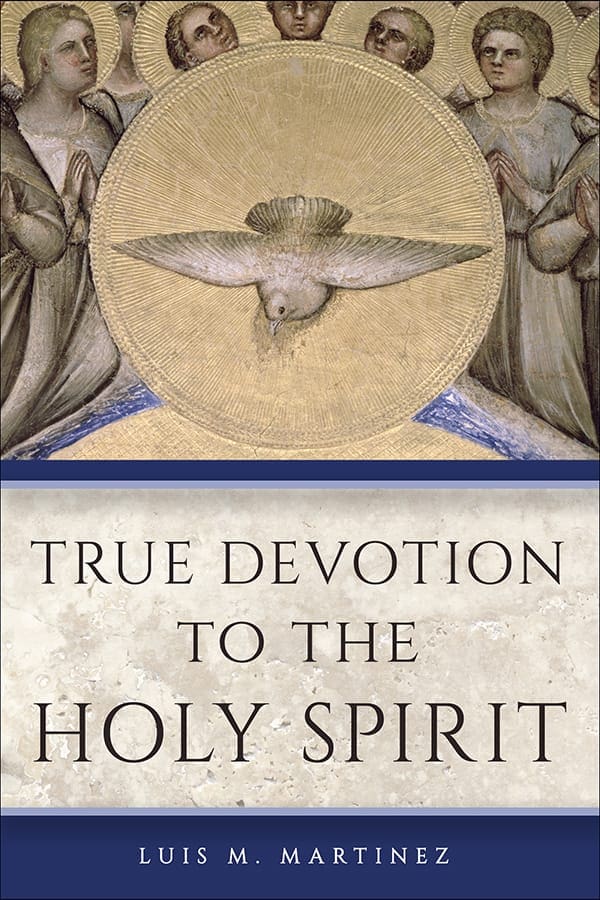One fortunate tendency of our times has been that which seeks to establish the supernatural life on the solid basis of dogma. Nothing is more right and necessary than this. Life ought to be based on truth; or rather, it is truth itself that descends, so to speak, from the heights of the understanding to pour itself out over the affections, the works, and all the activity of man.
The truths that we beg God to reveal to us are not only “light,” but “spirit and life.” They are not only a sublime and complete doctrinal system; they are also “words of eternal life” — the exceedingly fruitful seeds that transform souls when the intelligence and the heart are opened to them as to the very substance of life.
Love is the essence of the Christian life. It is the charity poured by the Holy Spirit into souls, the charity that embodies the perfection of all the virtues. But it is a very ordered love, because virtue is order in love, according to the beautiful and profound words of St. Augustine. And that order is the fruit of light, of dogmatic truth, for, as St. Thomas teaches, it belongs to wisdom to set things in order.
The influence of dogma in the Christian life puts each thing in its place and thus avoids those pietistic deviations caused by mere personal inclination or lack of instruction. Such deviations, although devout and well-intentioned, hinder the prompt and rich flowering of Christian perfection in souls. It is more important than we sometimes realize to put things in their proper place in the spiritual life.
St. Grignion de Montfort, in his excellent little treatises True Devotion to Mary and The Secret of Mary has done no more than establish the most holy Virgin in her place in Christian piety. The merit of these works is that they show an understanding of the universal and indispensable function of Mary Immaculate in the sanctification of souls — a traditional doctrine of the Church that obtained the magnificent confirmation of the Holy Apostolic See in modern times when the feast of Mary, Mediatrix of All Graces, was introduced into the Liturgy.
St. Grignion de Montfort understood so clearly the place that belongs to Mary in the work of sanctification that he made devotion to this sweet Mother, not something superficial or intermittent, consisting of isolated practices with a special place and hour +in our day, but constant and essential, reaching to the very depths of our heart and filling our whole being and all our life like a heavenly perfume.
The method of Grignion de Montfort is not artificial. It does not impose on Christian life the particular note of filial tenderness that the saint himself professed for the Blessed Virgin. It simply shows how to bring to Christian life the traditional Catholic teaching about Mary. That is, it gives her her proper place as universal Mediatrix of the graces of God.
With even greater reason, then — because He is more forgotten — the Holy Spirit must be given His proper place, the place that rightfully belongs to Him in Christian life and Christian perfection. Devotion to the Holy Spirit must become what St. Grignion de Montfort made of devotion to Mary: something not superficial and intermittent, but constant and profound, filling the depths of souls and impregnating lives with the sweet unction of infinite love.
Christian life is the reproduction of Jesus in souls; and perfection, the most faithful and perfect reproduction, consists in the transformation of souls into Jesus. This is the doctrine of St. Paul, set forth time and again in his letters: “Do you not know . . . that Christ Jesus is in you?”; “All you who have been baptized into Christ have put on Christ”; “. . . Christ dwelling through faith in your hearts”; “Those whom He has foreknown He has also predestined to become conformed to the image of His Son.”11 These are some of the apostle’s many expressions relative to Christian life.
As for perfection, these profoundly comprehensive words are well known: “It is now no longer I that live, but Christ lives in me.” The word transformation is also from St. Paul: “But we all, with faces unveiled, reflecting as in a mirror the glory of the Lord, are being transformed into His very image from glory to glory.”
Now, how will this mystical reproduction be brought about in souls? In the same way in which Jesus was brought into the world, for God gives a wonderful mark of unity to all His works. Divine acts have a wealth of variety, because they are the work of omnipotence. Nevertheless, a most perfect unity always shines forth from them, because they are the fruit of wisdom. And this divine contrast of unity and variety stamps the works of God with sublime and unutterable beauty.
In His miraculous birth, Jesus was the fruit of Heaven and earth. Isaiah foretold this in words breathing forth the poetry of an age-old desire and a unique hope, words that the Church lovingly repeats during Advent: “Drop down dew, ye heavens, from above, and let the clouds rain the Just: let the earth be opened and bud forth a Savior.” The Holy Spirit conveyed the divine fruitfulness of the Father to Mary, and this virginal soil brought forth in an ineffable manner our most loving Savior, the divine Seed, as the prophets called Him.
This is what we are taught regarding Jesus, with the conciseness and the precision of an article of Faith: “He was conceived by the Holy Spirit . . . of the Virgin Mary.” That is the way Jesus is always conceived. That is the way He is reproduced in souls. He is always the fruit of Heaven and earth. Two artisans — the Holy Spirit and the most holy Virgin Mary — must concur in the work that is at once God’s masterpiece and humanity’s supreme product. Both the Holy Spirit and the Virgin Mary are necessary to souls, for they are the only ones who can reproduce Christ.
Undoubtedly, the Holy Spirit and the Virgin Mary sanctify us in different ways. The first is the Sanctifier by essence, because He is God, who is infinite sanctity, and because He is the personal Love that completes, so to speak, the sanctity of God, consummating His life and His unity; and it belongs to Him to communicate to souls the mystery of that sanctity. The Virgin Mary, for her part, is the cooperator, the indispensable instrument in and by God’s design. From Mary’s maternal relation to the human body of Christ is derived her relation to His Mystical Body, which is being formed through all the centuries until the end of time, when it will be lifted up to the heavens, beautiful, splendid, complete, and glorious.
These two, then, the Holy Spirit and Mary, are the indispensable artisans of Jesus, the indispensable sanctifiers of souls. Any saint in Heaven can cooperate in the sanctification of a soul, but his cooperation is not necessary, not profound, and not constant. But the cooperation of these two artisans of Jesus of whom we have just been speaking is so necessary that, without it, souls are not sanctified (and this by the actual design of Providence) and so intimate that it reaches to the very depths of our soul. For the Holy Spirit pours charity into our heart, makes a habitation of our soul, and directs our spiritual life by means of His gifts. The Virgin Mary has the efficacious influence of Mediatrix in the most profound and delicate operations of grace in our souls. And, finally, the action of the Holy Spirit and the cooperation of the most holyVirgin Mary are constant; without them, not one single character of Jesus would be traced on our souls, no virtue would grow, no gift would be developed, no grace would increase, no bond of union with God would be strengthened in the rich flowering of the spiritual life.
Such is the place that the Holy Spirit and the Virgin Mary have in the order of sanctification. Therefore, Christian piety should put these two artisans of Christ in their true place, making devotion to them something necessary, profound, and constant.
But all the dogmatic richness and all the practical influence, the treasures of light and life, that are contained in this synthesis, must be brought out by analysis.With divine help, then, let us attempt it in the following pages.
+
This article is adapted from a section in True Devotion to the Holy Spirit by Luis M. Martinez, which is available from Sophia Institute Press.
 Art for this post on the Holy Spirit: Cover and interior images used with permission.
Art for this post on the Holy Spirit: Cover and interior images used with permission.





